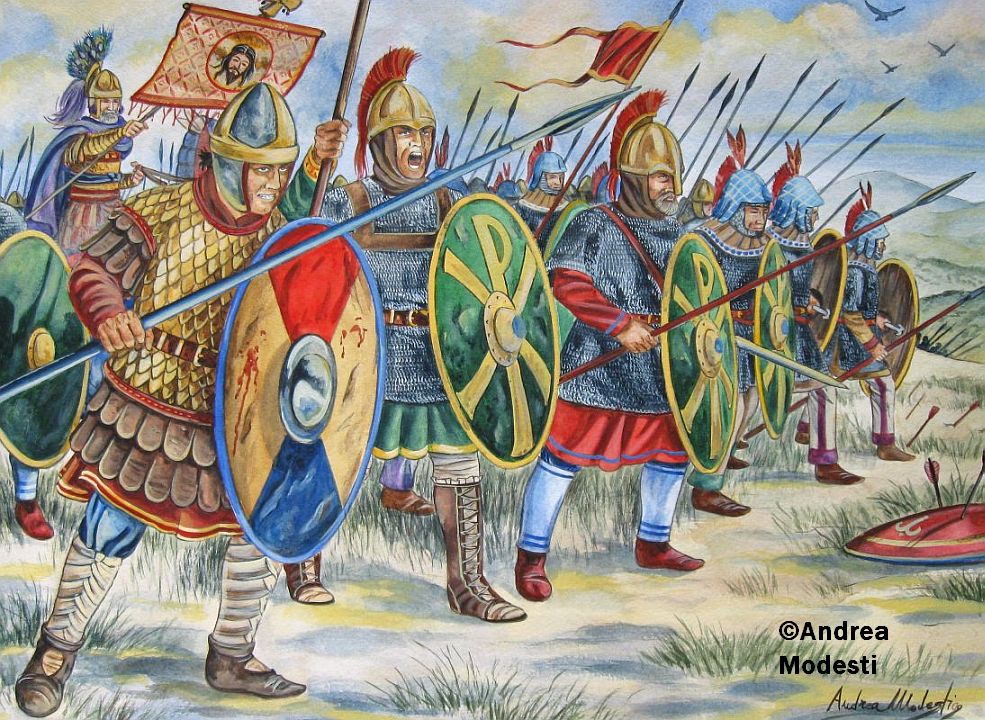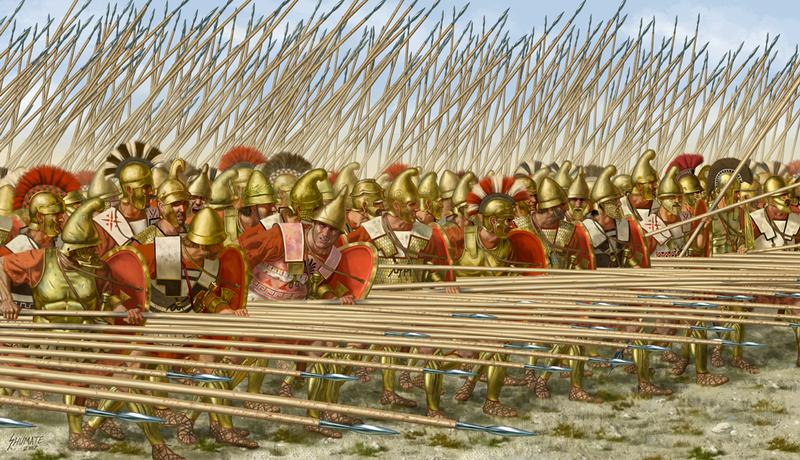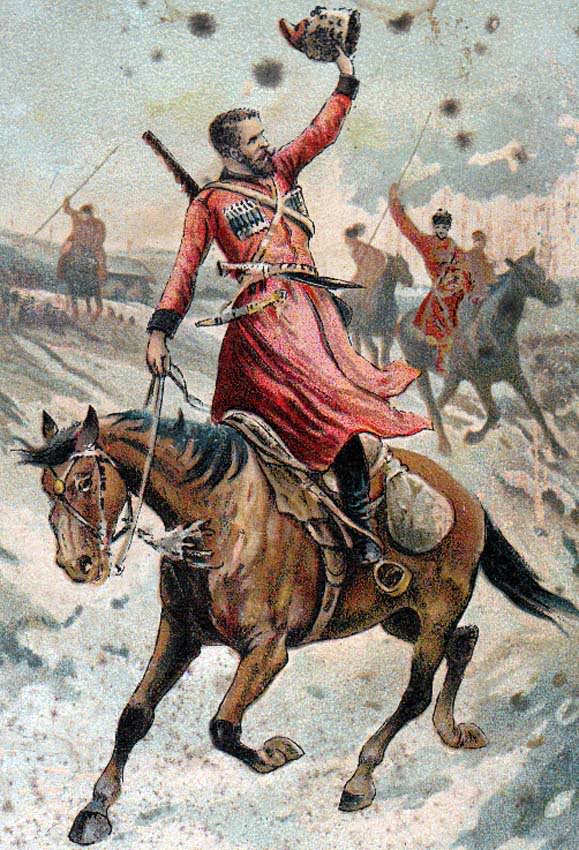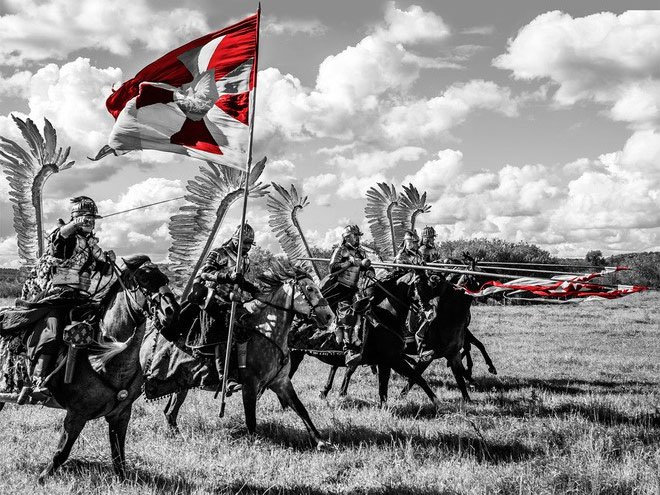In this Top 13, besides famous names like Sparta or Rome, 3 of them are Hung No, Han and Tang are all from China.
1. Sparta Heavy Infantry
Armed Forces of Sparta.
Sparta was the first professional army in history, with strong will and strict discipline. During the Peloponnesian War, 9,000 heavy infantry from Sparta left the Athenians to stay in the city center for several years. During the Persian War, only 500 soldiers from Sparta led 3,000 Greek soldiers to fight indiscriminately with 100,000 Persians. In the end, Persia had to rely on the traitor’s instructions to the Greeks to achieve victory.
2. The Han Dynasty
Contemporary, the Han army and the Roman army were considered the two most powerful forces in the world. However, the achievements of the Han were still “better” than those of the Romans when considering the wars with the nomads. Han army has strong fighting power, strict organization and uses many crossbows, so it has a greater advantage than armies of other countries in battles. It is also an all-powerful military model typical of human history.
3. Hungarian Cavalry

Hungarian cavalry.
The Huns have the ability to move, to attack as fast as lightning, to render the enemy unable to turn around, to replace themselves several times a day while ensuring the ability to fight. In addition, this army also had the main weapon, the bow, which was much stronger than the bow of the Western army at the time.
4. Mongolian Cavalry

Mongolian Army.
The Mongolian cavalry was founded by Genghis Khan. This army escaped the slavery of traditional European military thought, forming an empire of unprecedented scale in the world and also known for its incredible slaughter.
Considering each cavalry on its own, the Mongolian cavalry might not be as good as the Macedonian or Ottoman cavalry, but when they join forces, this army is extremely strong, even the strongest. They are like ferocious beasts on a battlefield born on horseback and for one purpose, rushing onto the battlefield to kill. There was hardly any place to support the Mongolian hooves.
5. Teutonic cavalry
Although the cavalry was not victorious, in its most prosperous period the Teutonic Knights actually controlled the entire eastern Baltic Sea.

Teutonic “steel” cavalry.
They are always at the forefront of battles and are real monsters on the battlefield, strategically rushing into enemy formation from afar like a giant rhino then spread out over 2 wings and come back to get ready for the next one. stroke. This action was repeated over and over again until the enemy formation was torn apart.
6. Roman army

Roman army.
The legions of the Roman army consisted of around 5,000 heavy infantrymen recruited from among the Roman citizens. In the Mediterranean, the Roman army waged countless wars and defeated many different peoples such as the Gauls, the Samnites, Italy, Epirus or Syracuse …
7. Byzantine army

Strength of the Byzantine army.
The Byzantines prospered during the Justinian period. Before the 11th century, the Byzantines remained the most powerful army in the Near East. The defensive capacity of this army is said to be the most powerful in the world, and the cavalry is armed with spears, bows and arrows.
8. Macedonian Army
The Macedonian phalanx army (infantry) is equipped with heavy weapons, the left hand holds a circular shield about 1 m in diameter, the right hand holds a spear about 2 m long, the formation is sharp and dense.

Macedonian army of Phalanx (infantry).
In addition to the infantry, Macedonia also has a very strong Hetairoi cavalry army. It was the main cavalry force of the Macedonian army and was considered the most successful cavalry force in the ancient world under the leadership of King Philiops II and later his son – Alexander the Great. .
Alexander the Great considered the profession of soldier to be an Orthodox profession, built a system of training schools and practiced very methodically. The Hetairoi cavalry always focused on developing their forces, at the same time trying to overcome weaknesses, faithful to the strategy of flashing the ribs to disrupt the tactical formation of the enemy, then began to fight in retirement. Hetairoi has always been used as an auxiliary force for the Phalanx infantry.
9. Arab cavalry
The Arab Cavalry is the powerful cavalry of Khalid ibn Al Walid founded for the purpose of serving the conquest and expansion of Islam.

Arab soldiers.
The Arab cavalry has a spirit of martyrdom will, endurance, discipline, excellent equestrian skills, extreme religious zeal, but always very alert when on duty.
Each cavalry learns to ride horses, camels, use a variety of weapons such as swords, spears, bows, including martial arts and military tactics.
10. The Tang Army
The military line is a powerful army formed by many peoples. The army line consisted of an army corps of 12,500 people, under the army was the headquarters, under the barracks were the corps, each group led 2 brigades, each brigade had 100 people. The army line is the most elite in terms of quality and ranks first in quantity.
11. Cossack cavalry

The Cossack cavalry is distinguished by its flexible tactics.
Cossacks are very well known horsemen and are expected to be the best cavalry of all time. They are masters of combat, head-to-head battles, sweeping, slippersistage to combat and racing tactics. Each soldier has military skills and very high independence.
12. Napoleon’s armored cavalry

Napoleon’s army.
Napoleon’s religious designs were a symbol of greatness, strength and discipline. With the ingenious military organization of Naopleon I, the French army and cavalry became stronger than ever after millennia of weakness and even dullness.
13. Husaria Cavalry
Not only are they particularly impressed with their wings which make them look like an army emerging from the mythical world, but this cavalry is also known for its clever military tactics and special armor which creates destructive power. destroy the enemy.
The name of this cavalry makes the enemy terrified whenever they see wings on the battlefield, with countless battles the cavalry team is nearly undefeated. A series of successive victories of this legion such as: Lubiszew (1577), Byczyna (1588), Kokenhausen (1601), Kircholm (1605), Kluszyn (1610), Chocim (1621), Martynów (1624), Trzciana (1629) ), Ochmatów (1644), Beresteczko (1651), Polonka (1660), Cudnów (1660), Chocim (1673), Lwów (1675), Vienna (1683) and Párkány (1683).
This undefeated streak creates the Golden Age of Hurasia warriors. On flat ground, they are almost undefeated. Not only that, in most battles the number of this cavalry was much lower than that of the opponent.

The Husaria cavalry is considered the most powerful cavalry in European history.
Typically, at the Battle of Kircholm (1605), Swedish troops outnumbered their strength and strength with 11,000 infantry and rifles against 1,900 Hurasia cavalry.
But they were defeated with 6000 casualties, and the Polish cavalry lost less than 100 people!
The most honorable battle and the legendary strength of the winged cavalry was when they had to face the most powerful enemy in the world at that time: the Ottoman Empire – the new empire that destroyed the La Empire. Old Code to dominate Europe.
With only 3,000 Husaria horsemen to defeat the mighty army of 200,000 in 1683 at the Battle of Vienna (saving the Austrian capital Vienna from the siege of the Ottomans).
The name and immortal legends of the Winged Cavalry were once again heightened with a victory to convince the Ottoman Empire to become the most powerful cavalry in European history.


